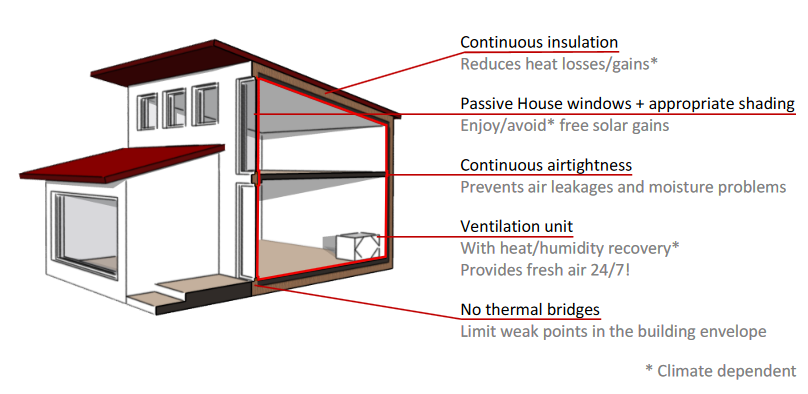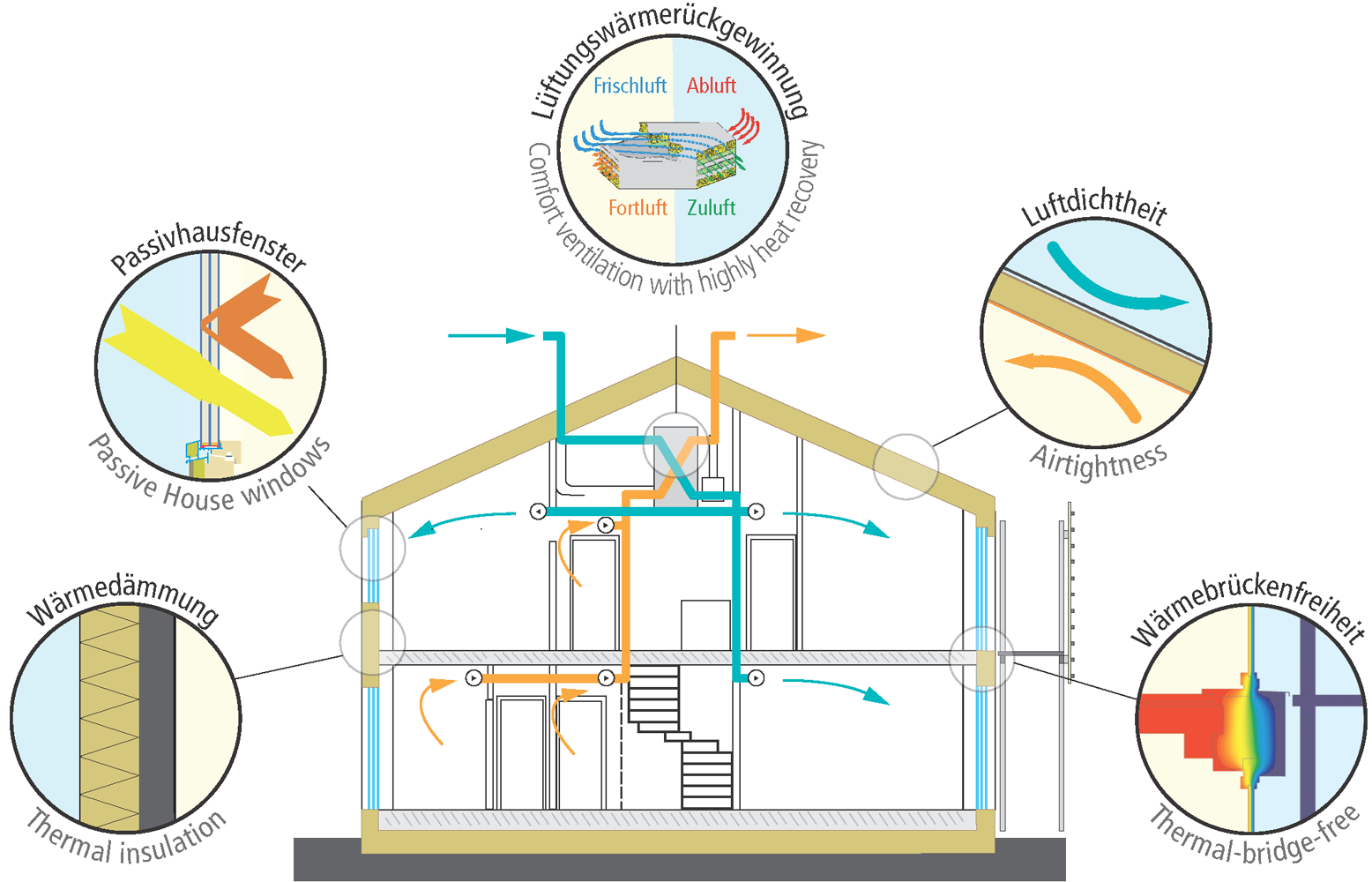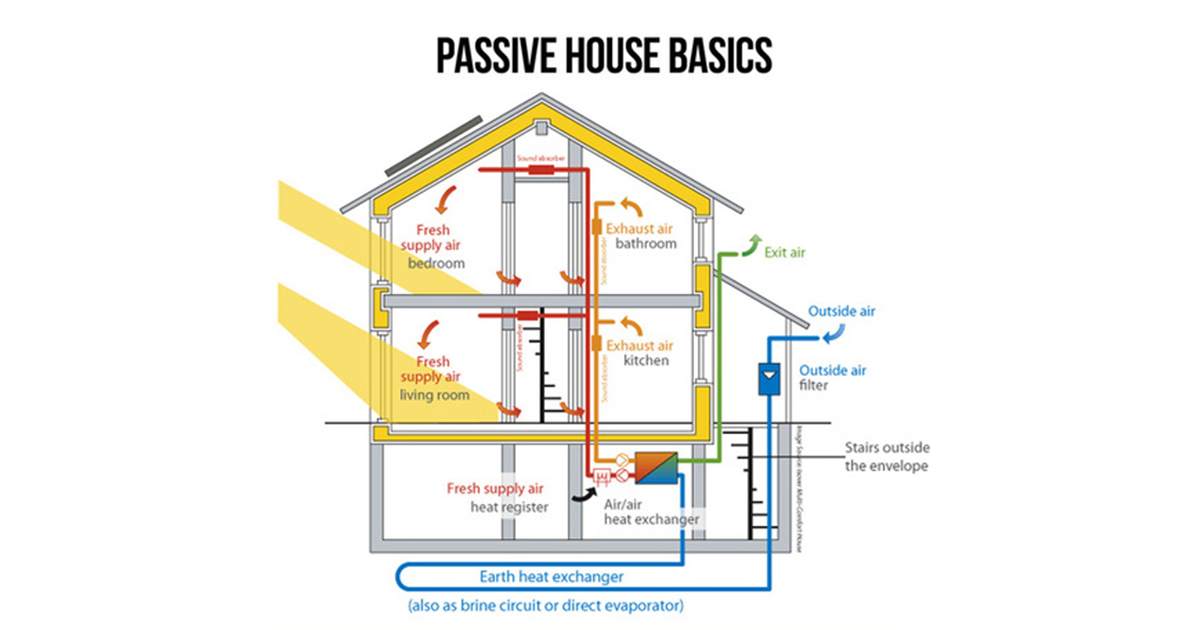Table Of Content

A passive house is a building that is designed and constructed to be extremely energy efficient, with the goal of reducing its environmental impact and energy consumption. Yes, passive house construction is estimated to cost 10 to 15 percent more than standard building costs. That said, by slashing energy costs, passive houses save owners considerably over time. With an airtight enclosure, continuous, balanced ventilation is absolutely critical to indoor air quality (IAQ). Passive buildings continually exhaust air from bathrooms, kitchens and other areas with stale air and supply fresh air to living and working spaces.
Money Matters: Building a greener future with sustainable housing - Daily Herald
Money Matters: Building a greener future with sustainable housing.
Posted: Sat, 27 Apr 2024 22:15:28 GMT [source]
A comfortable conclusion
Then during construction, all components are documented in measured photographs to prove the project is built as designed. A passive house refers to a design and construction standard that aims to reduce heating and cooling requirements in homes. This way, conventional heating systems are no longer necessary which helps reduce wasteful fossil fuels used to constantly heat and cool a building. When it comes time to move into your next home, it benefits you—and the environment—to incorporate sustainable features. Eco homes make use of renewable resources, reduce energy consumption, and conserve natural resources, including water.
Traits of passive houses
So chances are, that without certification, you will fall short of expectations. Essential to the success of the methodology is the ability to reliably calculate the performance characteristics before the building is built. So at the core of the methodology is the Passive House Planning Package or PHPP, energy model. These aspects and more are all carefully calculated, and all integrated with the entire architectural process of design and construction – from day one of the project’s conception. From this discovery and formulation of the passive house concept, the Passive House Institute or PHI for short, developed the Passive House Standard – our next iteration of the phrase. The holistic design of Phius buildings make them uniquely built for the long haul.
Design Travel
The cavities can be filled with as much as 12 inches of densely packed cellulose, fiberglass, or other materials. Just inside the inner wall there is often a cavity containing all the wiring and ducting. With all this insulation, Passive Houses are pleasantly quiet and comfortable. These standards are much higher than houses built to most normal building codes. In September 1996, the Passivhaus-Institut was founded in Darmstadt to promote and control passivhaus standards. By 2010 more than 25,000 passivhaus structures were estimated to have been built.[1][9][22] Most are located in Germany and Austria, others in various countries worldwide.

Applicable to all types of buildings including single-family homes and multifamily apartment buildings, these principles outline how to achieve a high standard of energy efficiency while also balancing comfort. The principles include thermal control, air control, radiation control, and moisture control. A passive house relies on a variety of techniques and technologies to minimize its energy consumption.
HPD Passive House Projects
Which requirements exist with regard to components, planning, design, and project implementation? What is it like to live in a Passive House, what has already been built, and why are Passive Houses such an attractive investment? In order to competently answer such questions, the International Passive House Association (iPHA) has created the informational brochure "Active for more comfort".
Equip Yourself With Passive Building Resources
Appropriate shading strategies exploit the sun's energy in the heating season and minimize overheating during the cooling season. Daylighting can be a critical passive strategy to reducing lighting loads in non-residential buildings and improving indoor environmental quality (IEQ). Continuous insulation throughout the entire building enclosure helps to reduce a buildings heating and cooling needs and improves comfort.
Space heating requirement
This type of home — built to a rigorous standard of construction to maximize energy efficiency — is widely embraced in Europe, though awareness is still growing in the United States. In this article, we’re going to explore what a passive house is, and speak with experts to understand the principles of passive house design and what it’s like to live in one. Passive house ventilation systems provide plentiful fresh filtered air free of dust and pollen, maximum energy efficiency through heat recovery system (HRV), and unlike other ventilation systems is is 100% fresh air (no air recirculation).

Whether you live in one, dream of owning one, or have never heard of a passive house until reading this article, there’s no denying that real estate has a green future. Homeowners — and the real estate agents helping them prepare their homes for market — are more aware than ever of the importance of components like proper insulation and high-quality windows for effective temperature regulation. Plus, there’s that nice little perk of saving cash on heating and cooling costs. Utility bills are more stable and predictable, and so are your day-to-day living conditions.
This relates to indoor air pollution, as there are limits on volatile organic compounds (VOC) in the home, which affect the quality of the air. And finally, the temperature should stay comfortable – as Passive Houses are geared towards regulating temperature, so they’re comfortable throughout the year. Similarly, there’s a maximum amount of energy Passive Houses can use to run your heating and domestic appliances. Companies that specialize in toxin-free cabinets include Puustelli Kitchens, Bertolini, KERF, PureKitchen, and more. Schneeberger recommends the Healthy Materials Lab at Parsons School of Design as a resource for finding sustainable materials and suppliers. “One home that’s not energy-efficient might require upgrading the windows, might require replacing an old pool pump with a variable speed pump, or replacing old appliances with newer, more efficient models.
The Insider: Heights Carriage House Gets Showstopping Stair - Brownstoner
The Insider: Heights Carriage House Gets Showstopping Stair.
Posted: Thu, 25 Apr 2024 15:09:06 GMT [source]
Offering a passive home rental is extremely valuable as passive homes aren’t as widely available as other rentals on the market. No matter where you are inside a passive house, the idea is that the temperature stays consistent. Even areas next to windows or doors where there can easily be drafts will become regulated. Since the windows and doors are well insulated, your tenants will be able to comfortably sit by a big window, sipping their morning coffee, in the middle of winter. Since there is no active heating system, a passive home uses “free heat” to warm the home.
If you make any energy-saving modifications to your rental property, don’t forget to market it on the web using our free rental advertising tool and tenant screening services so you can attract potential tenants. With a combination of heavy insulation and an airtight structure, noises from busy streets and other outside sounds are reduced. Not only that, but the absence of an active heating and cooling system takes away the additional noise the equipment makes as it runs, making a passive home much quieter than other buildings. So even if your property resides in a busy area, you won’t be compromising your available tenant pool. The buildings are designed for longevity and sustainability, which means that your list of would-be renovation projects during the years is kept to an absolute minimum.
Passive house builders also focus on air control to ensure superior indoor air quality of a home. They do this by air sealing the enclosure and providing balanced, mechanical ventilation that constantly provides fresh air and prevents drafts. Airtightness is the foundation of air control in passive building design, helping to make the home more energy efficient and durable, which ultimately results in energy and cost savings.
Because passive houses are so efficient, it’s easy to maintain a comfortable indoor temperature no matter the season. Savings on heating and cooling costs can be as high as 90% compared to conventionally built homes, since passive buildings use just 15 kWh of heating energy per 10 square feet per year. Yes, conceptually, an existing structure can be retrofitted to conform to passive house standards.
“With solar panels, homeowners can significantly reduce their dependence on traditional electricity sources, leading to substantial savings on their electric bills over time,” Lowe says. As part of a top-to-bottom renovation, consider installing a geothermal heating and cooling system to conserve energy. They work by tapping into stable temperatures a few feet below the earth’s surface to heat and cool a home. If you’re working with a designer to build a brand-new home, it’s imperative to employ passive design, which reduces a house’s ecological footprint by using the local climate and landscape to its advantage. One way to do that is taking note of the orientation of the house in relation to the sun. Passive buildings may not be a fixture of U.S. neighborhoods just yet, but minor upgrades like low-flush toilets and LED light bulbs are no longer enough for a home to be considered energy-efficient.
Finally, in 2015, PHIUS released the PHIUS+ standard that considers cost-effective and climate-specific performance criteria. A passive house (“passivhaus” in German) is a design standard that delivers healthy, comfortable, and efficient homes using a holistic approach. Essentially, these homes heat and cool themselves, cutting energy bills by about 90 percent. Homeowners often report that they don’t even have to turn on their heat during the winter because of the way their passive house is designed. With more powerful hurricanes, wildfires, heat waves, and flooding, homeowners are experiencing more frequent power outages and rising energy costs.

No comments:
Post a Comment